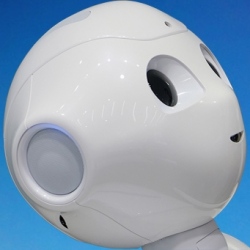
Pakeman primary school in north London has nearly 4,000 primary school children in Britain signed up for weekly one-to-one maths sessions with tutors based in India and Sri Lanka. The lessons, provided by a company called Third Space Learning, are targeted at pupils struggling with math, particularly those from disadvantaged backgrounds.
From next year, the platform will become one of the first examples of artificial intelligence (AI) software being used to monitor, and ideally improve, teaching.
Together with scientists at University College London (UCL), the company has analysed around 100,000 hours of audio and written data from its tutorials, with the goal of identifying what makes a good teacher and a successful lesson.
Tom Hooper, the company’s CEO, said: “We’re looking to optimise lessons based on the knowledge we gain. We’ve recorded every lesson that we’ve ever done. By using the data, we’ve been trying to introduce AI to augment the teaching”.
Initially, the company’s 300 tutors will receive real-time, automated interventions from the teaching software when it detects that a lesson may be veering off-course.
Pupils on the programme have a 45-minute session with the same tutor each week. They communicate through a headset and a shared “whiteboard” (they can’t see each other). The lessons at Pakeman school are tailored to the individual, including visual rewards linked to the child’s interests. Premier League strikers for nearby Arsenal, cute animals and pink, iced doughnuts flash up on the screens.
In addition to the raw audio data, each lesson has various success metrics attached: how many problems completed, how useful the pupil found the session, how the tutor rated it. Using machine learning algorithms to sift through the dataset, the UCL team has started to look for patterns.
An early analysis found, perhaps unsurprisingly, that when tutors speak too quickly, the pupil is more likely to lose interest. Leaving sufficient time for the child to respond or pose their own questions was also found to be a factor in the lesson’s success, according to Hooper. These observations are likely to form the basis of the initial prompts that the tutors will receive, probably in the form of messages flashing up on their screen.
“We’re going to be drip-feeding it in in relatively simple ways to start with,” said Hooper.
As the technology evolves, the interventions could become more sophisticated and the software might play a more active role in teaching, raising questions about the extent to which intelligent software could replace human teachers.
Rose Luckin, a professor of learner centred design at University College London, who is collaborating with Third Space Learning on the project, said: “What we are very interested in is the right blend of human and artificial intelligence in the classroom – identifying that sweet spot.”
According to Luckin, AI provides a unique opportunity to assess which teaching strategies are working and to individualise teaching.
“It would be able to say, for this child at the moment, Jolly Phonics is working well,” she said. “You would be able to look back over their reading process and see which interventions worked. The potential for the use of AI to make education tractable and visible is huge.”
However, she predicts that the insights gleaned from AI will often be applied by human teachers. “What I’m really concerned about is that people don’t run away with the idea that kids have to be plugged into the computer,” she said. “It’s about so much more than that.”
Hooper agreed that the aim is not to replace teachers with robots. “There’s a slightly dubious conversation about how AI will make humans irrelevant, but it’s not at all about replacing humans,” he said. “Our whole belief is that for children disengaged with the subject, who are lacking in confidence, people is what matter. An algorithm can’t provide that.”
